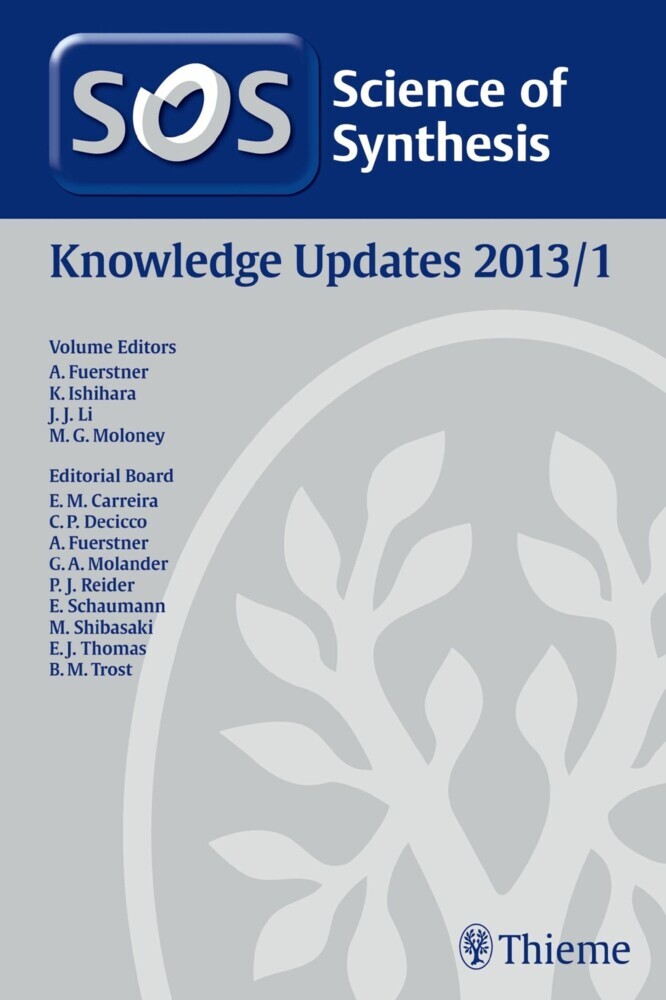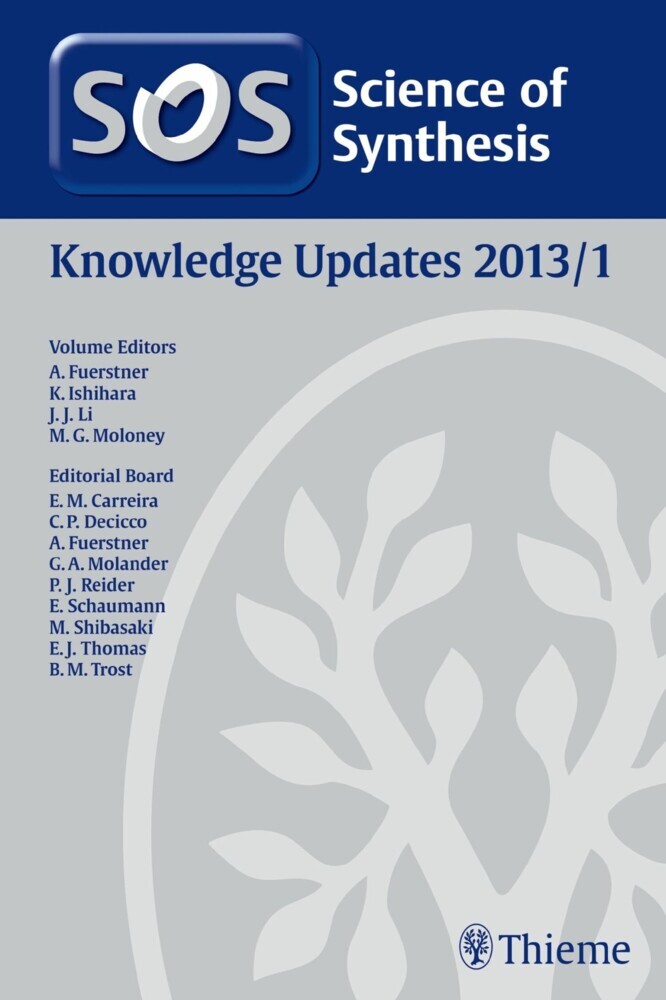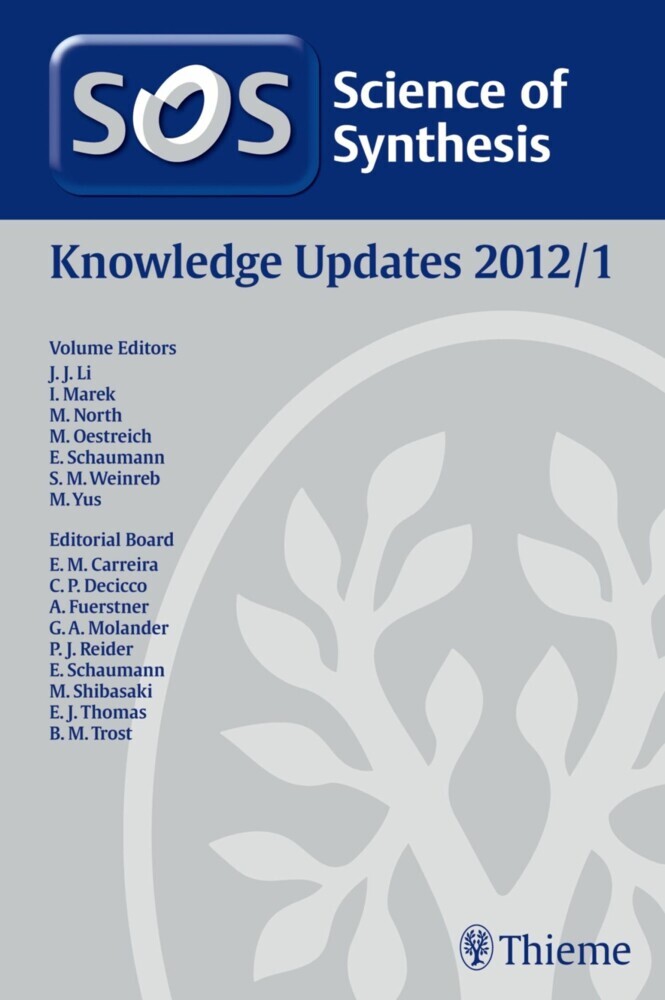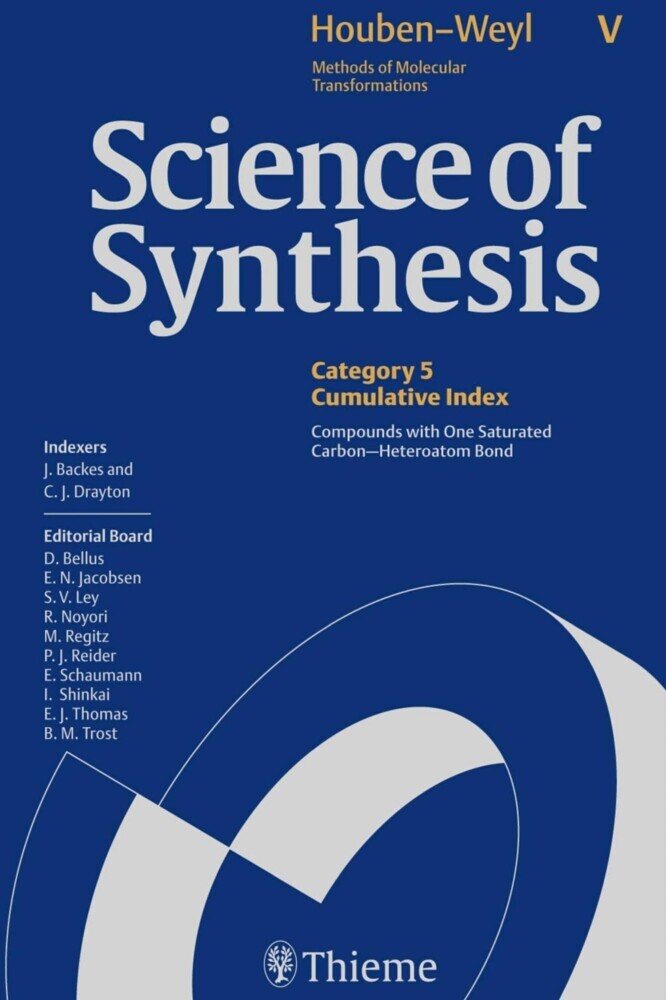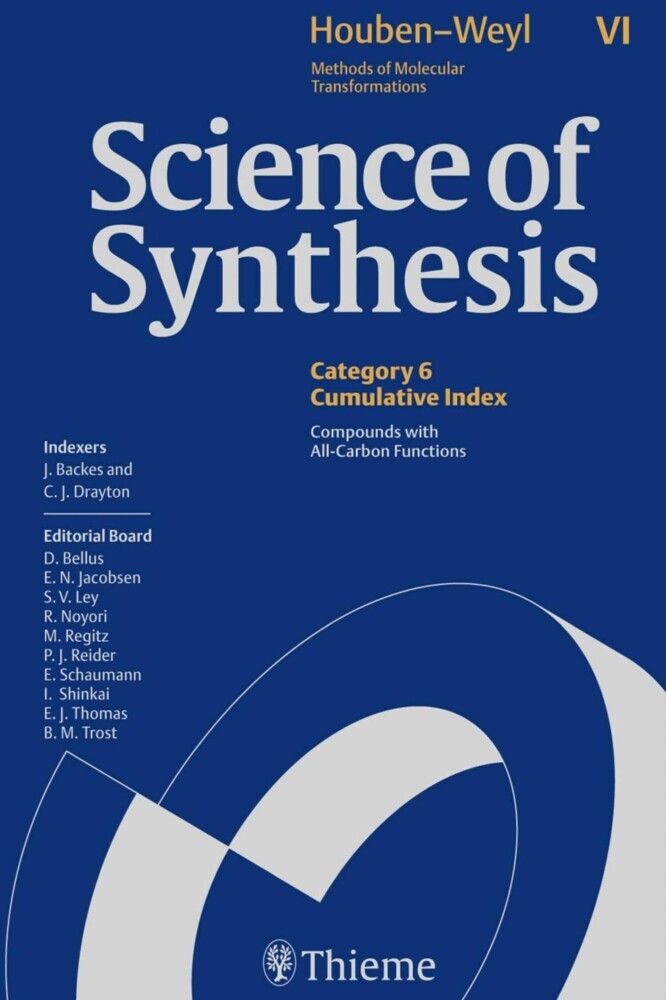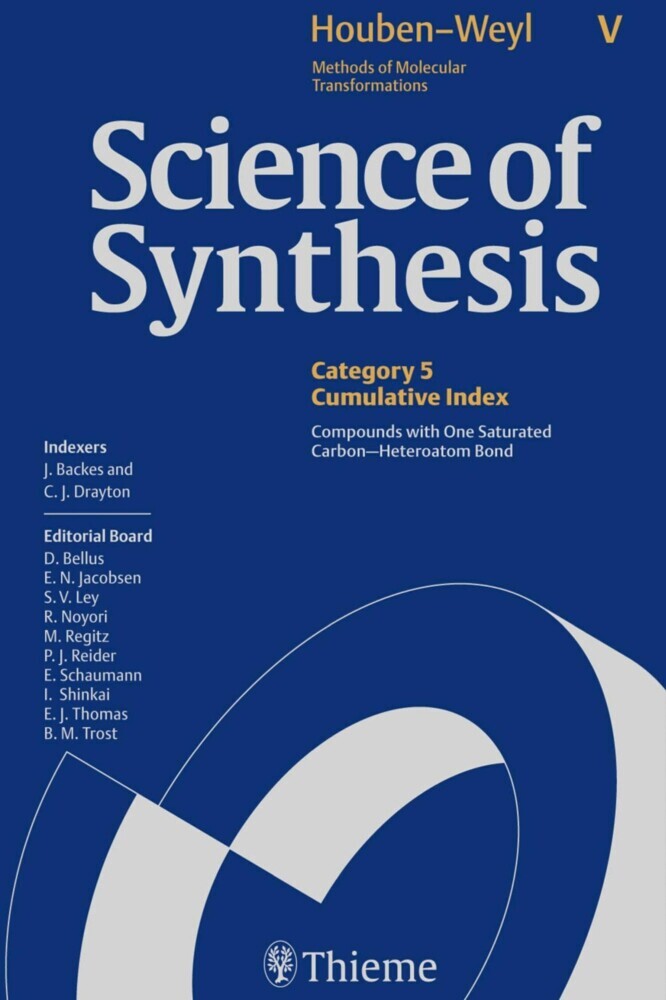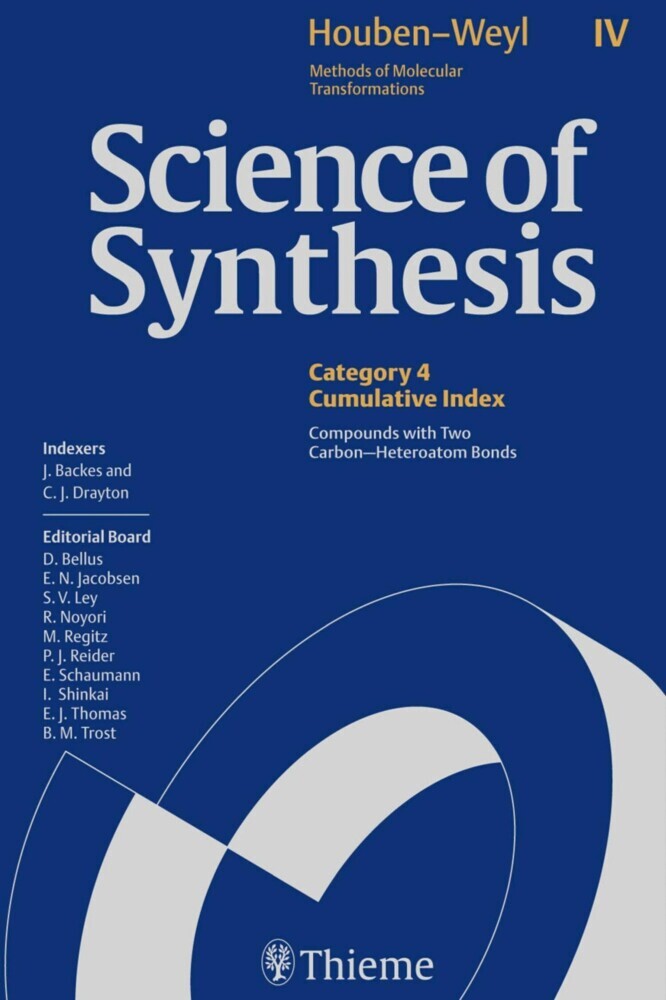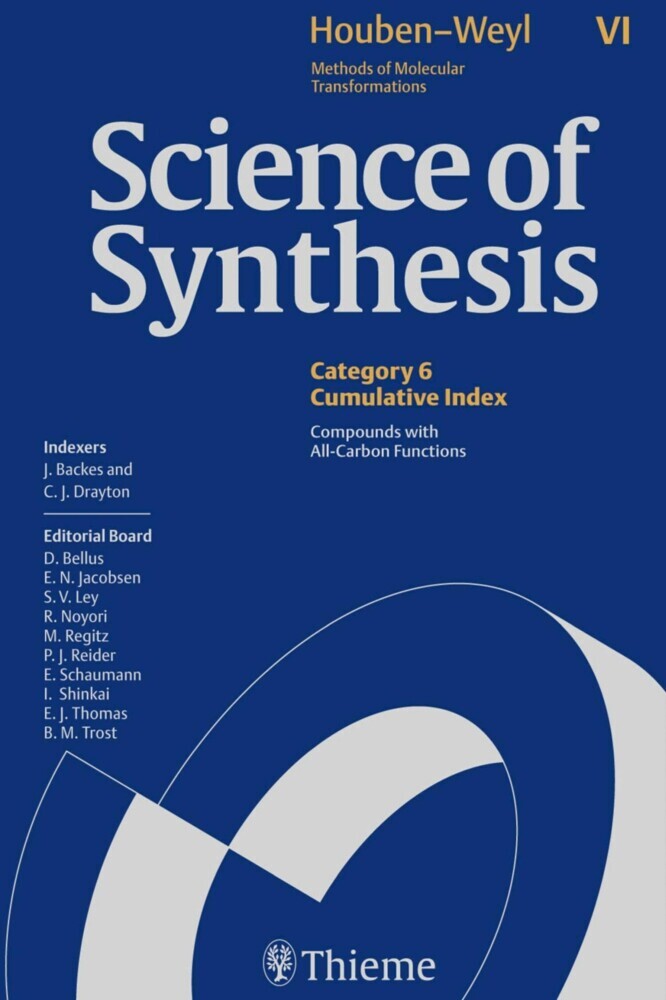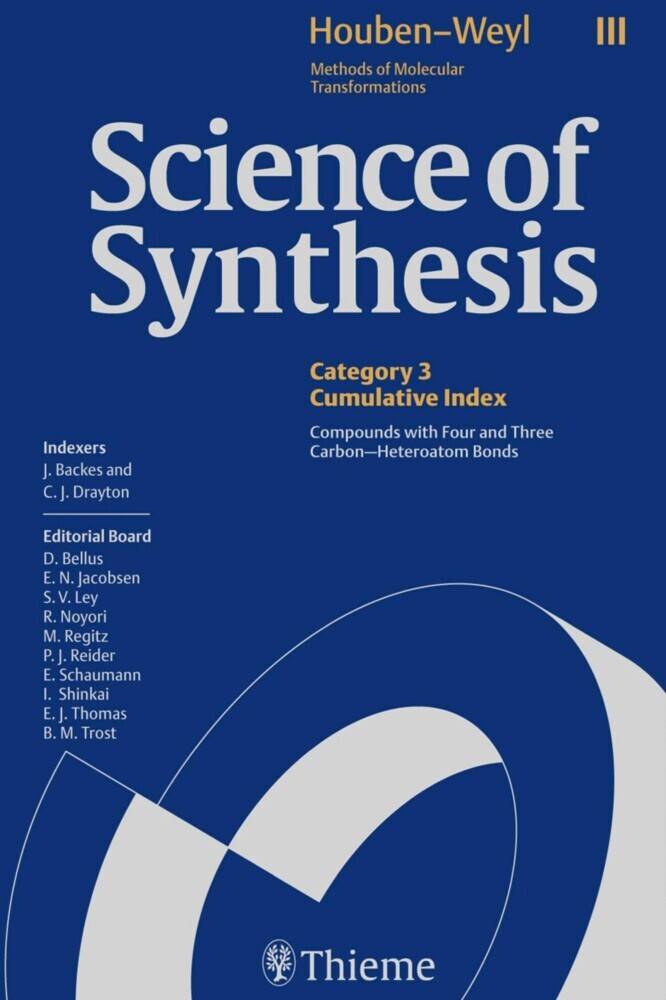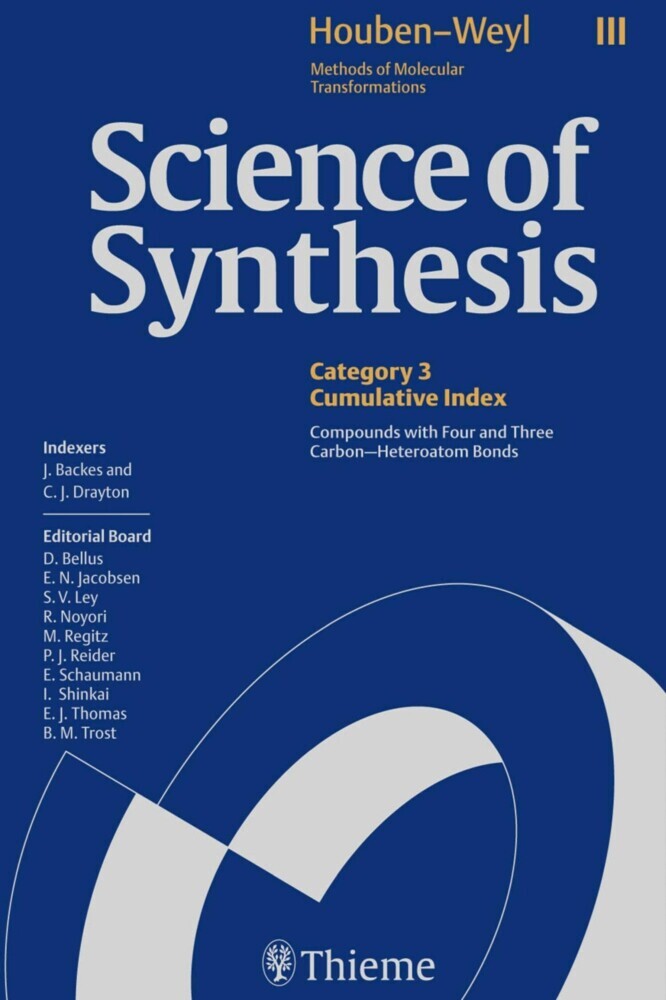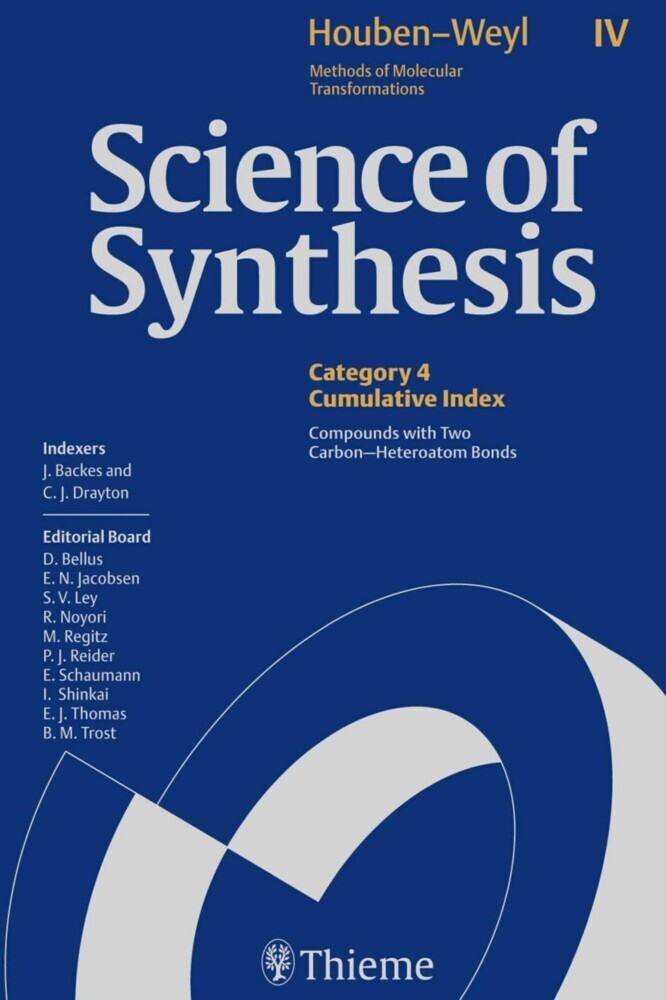Science of Synthesis Knowledge Updates 2013 Vol. 1
Science of Synthesis is a reference work for preparative methods in synthetic chemistry. Its product-based classification system enables chemists to easily find solutions to their synthetic problems.
Key Features:
- Critical selection of reliable synthetic methods, saving the researcher the time required to find procedures in the primary literature.
- Expertise provided by leading chemists.
- Detailed experimental procedures.
- The information is highly organized in a logical format to allow easy access to the relevant information.
The Science of Synthesis Editorial Board, together with the volume editors and authors, is constantly reviewing the whole field of synthetic organic chemistry as presented in Science of Synthesis and evaluating significant developments in synthetic methodology. Four annual volumes updating content across all categories ensure that you always have access to state-of-the-art synthetic methodology.
1;Science of Synthesis: Knowledge Updates 2013/1;1 1.1;Title page;5 1.2;Imprint;7 1.3;Preface;8 1.4;Abstracts;10 1.5;Overview;14 1.6;Table of Contents;16 1.7;Volume 5: Compounds of Group 14 (Ge, Sn, Pb);30 1.7.1;5.2 Product Class 2: Tin Compounds;30 1.7.1.1;5.2.1 Product Subclass 1: Tin Hydrides;30 1.7.1.1.1;Synthesis of Product Subclass 1;32 1.7.1.1.1.1;5.2.1.1 Method 1: Reduction of Tin Halides;32 1.7.1.1.1.1.1;5.2.1.1.1 Variation 1: Reduction of Tin Halides with Lithium Aluminum Hydride;32 1.7.1.1.1.1.2;5.2.1.1.2 Variation 2: Reduction of Tin Halides with Sodium Borohydride;34 1.7.1.1.1.2;5.2.1.2 Method 2: Synthesis from Organotin Oxides, Alkoxides, or Amides by Reduction;35 1.7.1.1.1.3;5.2.1.3 Method 3: Synthesis from Organotin Lithium, Sodium, Potassium, or Magnesium Compounds by Reactions with Electrophiles;36 1.7.1.1.2;Applications of Product Subclass 1 in Organic Synthesis;37 1.7.1.1.2.1;5.2.1.4 Tin-Mediated Radical Chain Reactions Not Involving Rearrangement of Intermediate Radicals;37 1.7.1.1.2.1.1;5.2.1.4.1 Method 1: Reduction of Carbon--Heteroatom Bonds;41 1.7.1.1.2.1.1.1;5.2.1.4.1.1 Variation 1: Reduction of Carbon--Halogen Bonds;41 1.7.1.1.2.1.1.2;5.2.1.4.1.2 Variation 2: Reduction of C--O Bonds;45 1.7.1.1.2.1.1.3;5.2.1.4.1.3 Variation 3: Reduction of C--N Bonds;48 1.7.1.1.2.1.2;5.2.1.4.2 Method 2: Formation of C--C Bonds by Radical Additions to Alkenes;50 1.7.1.1.2.1.2.1;5.2.1.4.2.1 Variation 1: Formation of C--C Bonds by Intermolecular Reactions with Alkenes;51 1.7.1.1.2.1.2.2;5.2.1.4.2.2 Variation 2: Formation of C--C Bonds by Intramolecular Addition of Carbon Radicals to Double Bonds;55 1.7.1.1.2.1.3;5.2.1.4.3 Method 3: Formation of C--N Bonds by Reactions of Nitrogen-Centered Radicals;68 1.7.1.1.2.2;5.2.1.5 Tin-Mediated Radical Reactions That Proceed with Rearrangement of Intermediate Radicals;72 1.7.1.1.2.2.1;5.2.1.5.1 Method 1: Radical Reactions That Proceed with Opening of Small Rings;72 1.7.1.1.2.2.2;5.2.1.5.2 Method 2: Radical Reactions That Proceed with 1,2- and 1,4-Group Transfer;75 1.7.1.1.2.2.3;5.2.1.5.3 Method 3: Radical Translocation through Intramolecular Hydrogen Abstraction;80 1.7.1.1.2.3;5.2.1.6 Hydrostannylation;84 1.7.1.1.2.3.1;5.2.1.6.1 Method 1: Hydrostannylation of Alkynes;84 1.7.1.1.2.3.1.1;5.2.1.6.1.1 Variation 1: Radical Hydrostannylation of Terminal Alkynes;84 1.7.1.1.2.3.1.2;5.2.1.6.1.2 Variation 2: Transition-Metal-Catalyzed Hydrostannylation of Terminal Alkynes;86 1.7.1.1.2.3.1.3;5.2.1.6.1.3 Variation 3: Palladium-Catalyzed Sequential Hydrostannylation and Stille Cross Coupling of Terminal Alkynes;89 1.7.1.1.2.3.1.4;5.2.1.6.1.4 Variation 4: Radical Hydrostannylation of Internal Alkynes;90 1.7.1.1.2.3.1.5;5.2.1.6.1.5 Variation 5: Transition-Metal-Catalyzed Hydrostannylation of Internal Alkynes;92 1.7.1.1.2.3.2;5.2.1.6.2 Method 2: Hydrostannylation of C==C, C==O, and C==N Bonds;96 1.7.1.1.2.3.2.1;5.2.1.6.2.1 Variation 1: Hydrostannylation of Alkenes;96 1.7.1.1.2.3.2.2;5.2.1.6.2.2 Variation 2: Addition Reactions of Tin Hydrides to C==O Bonds;99 1.7.1.1.2.3.2.3;5.2.1.6.2.3 Variation 3: Additions of Tin Hydrides to C==N Bonds;101 1.8;Volume 7: Compounds of Groups 13 and 2 (Al, Ga, In, Tl, Be···Ba);108 1.8.1;7.6 Product Class 6: Magnesium Compounds;108 1.8.1.1;7.6.11.21 Grignard Reagents with Transition Metals;108 1.8.1.1.1;7.6.11.21.1 Method 1: Mercury-Catalyzed Addition of Grignard Reagents to Aldehydes;109 1.8.1.1.2;7.6.11.21.2 Method 2: Nickel-Catalyzed Cross Coupling of Grignard Reagents;110 1.8.1.1.2.1;7.6.11.21.2.1 Variation 1: Reaction with Alkyl Halides;110 1.8.1.1.2.2;7.6.11.21.2.2 Variation 2: Reaction with Organosulfur Compounds;111 1.8.1.1.2.3;7.6.11.21.2.3 Variation 3: Reaction with Aryl Fluorides under Microwave Irradiation;113 1.8.1.1.3;7.6.11.21.3 Method 3: Palladium-Catalyzed Cross Coupling of Grignard Reagents;114 1.8.1.1.3.1;7.6.11.21.3.1 Variation 1: Rea
Fürstner, Alois
Bourtard, Nicolas
Dufour-Gallant, Jochen
Dörr, Aurélie
| ISBN | 9783131788818 |
|---|---|
| Artikelnummer | 9783131788818 |
| Medientyp | E-Book - PDF |
| Copyrightjahr | 2014 |
| Verlag | Georg Thieme Verlag KG |
| Umfang | 542 Seiten |
| Sprache | Englisch |
| Kopierschutz | Digitales Wasserzeichen |

